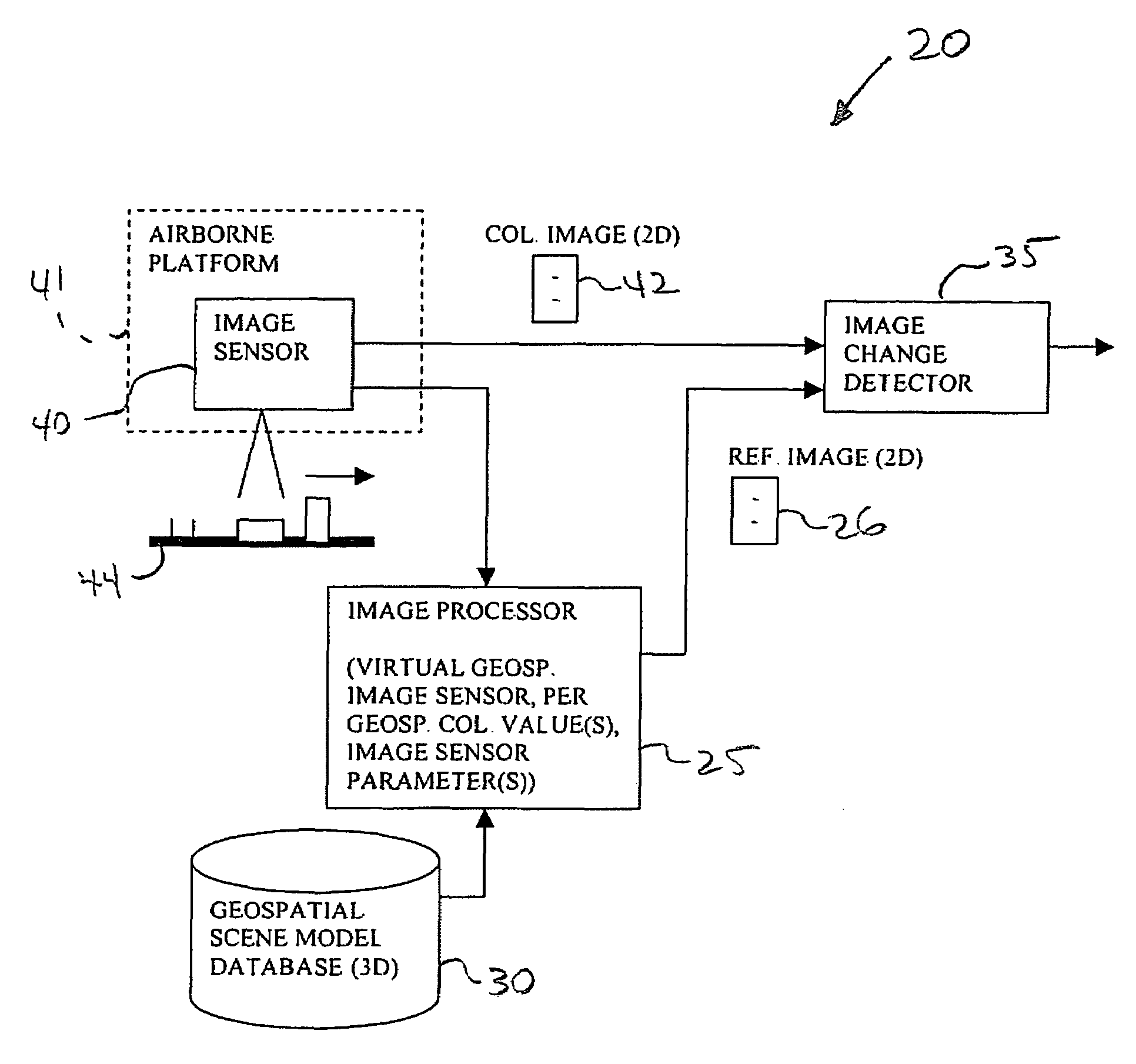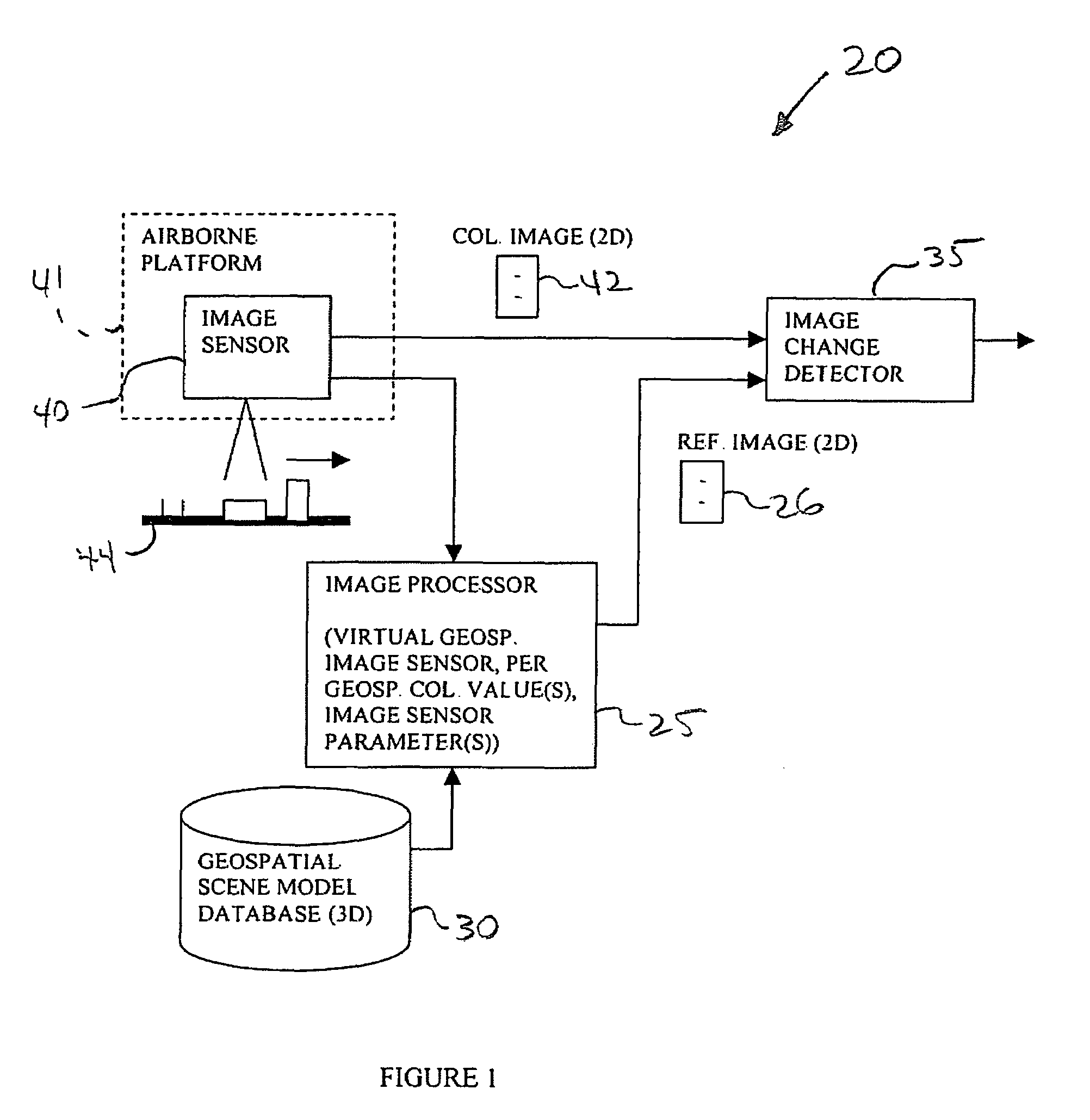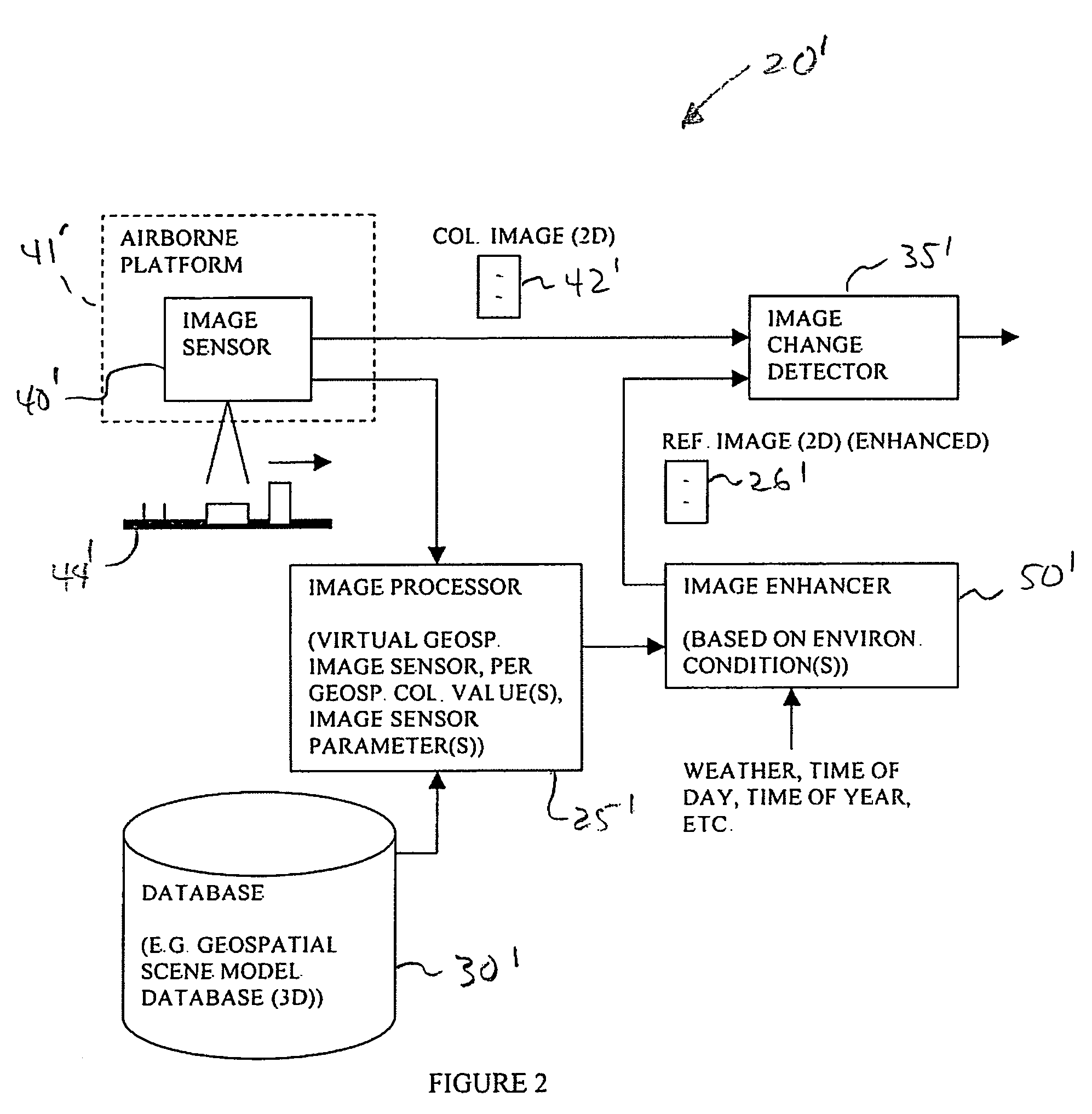Geospatial image change detecting system with environmental enhancement and associated methods
a technology of environmental enhancement and image change detection, applied in the field of image processing, can solve the problems of requiring a significant amount of time and labor, not well suited to modeling man-made structures, and producing realsite®, and achieve the effect of improving accuracy and operating efficiently
- Summary
- Abstract
- Description
- Claims
- Application Information
AI Technical Summary
Benefits of technology
Problems solved by technology
Method used
Image
Examples
Embodiment Construction
[0027]The present invention will now be described more fully hereinafter with reference to the accompanying drawings, in which preferred embodiments of the invention are shown. This invention may, however, be embodied in many different forms and should not be construed as limited to the embodiments set forth herein. Rather, these embodiments are provided so that this disclosure will be thorough and complete, and will fully convey the scope of the invention to those skilled in the art. Like numbers refer to like elements throughout, and prime notation is used to indicate similar elements in alternative embodiments.
[0028]Referring initially to FIG. 1, an image change detecting system 20 is initially described. As shown in the illustrated embodiment, the image change detecting system 20 comprises an image processor 25 cooperating with a geospatial scene model database 30 for generating a reference geospatial image 26 corresponding to the collected geospatial image 42. The system 20 als...
PUM
 Login to View More
Login to View More Abstract
Description
Claims
Application Information
 Login to View More
Login to View More - R&D
- Intellectual Property
- Life Sciences
- Materials
- Tech Scout
- Unparalleled Data Quality
- Higher Quality Content
- 60% Fewer Hallucinations
Browse by: Latest US Patents, China's latest patents, Technical Efficacy Thesaurus, Application Domain, Technology Topic, Popular Technical Reports.
© 2025 PatSnap. All rights reserved.Legal|Privacy policy|Modern Slavery Act Transparency Statement|Sitemap|About US| Contact US: help@patsnap.com



